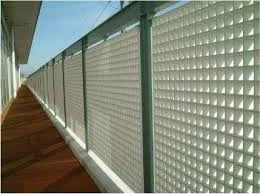
-
 Afrikaans
Afrikaans -
 Albanian
Albanian -
 Amharic
Amharic -
 Arabic
Arabic -
 Armenian
Armenian -
 Azerbaijani
Azerbaijani -
 Basque
Basque -
 Belarusian
Belarusian -
 Bengali
Bengali -
 Bosnian
Bosnian -
 Bulgarian
Bulgarian -
 Catalan
Catalan -
 Cebuano
Cebuano -
 China
China -
 China (Taiwan)
China (Taiwan) -
 Corsican
Corsican -
 Croatian
Croatian -
 Czech
Czech -
 Danish
Danish -
 Dutch
Dutch -
 English
English -
 Esperanto
Esperanto -
 Estonian
Estonian -
 Finnish
Finnish -
 French
French -
 Frisian
Frisian -
 Galician
Galician -
 Georgian
Georgian -
 German
German -
 Greek
Greek -
 Gujarati
Gujarati -
 Haitian Creole
Haitian Creole -
 hausa
hausa -
 hawaiian
hawaiian -
 Hebrew
Hebrew -
 Hindi
Hindi -
 Miao
Miao -
 Hungarian
Hungarian -
 Icelandic
Icelandic -
 igbo
igbo -
 Indonesian
Indonesian -
 irish
irish -
 Italian
Italian -
 Japanese
Japanese -
 Javanese
Javanese -
 Kannada
Kannada -
 kazakh
kazakh -
 Khmer
Khmer -
 Rwandese
Rwandese -
 Korean
Korean -
 Kurdish
Kurdish -
 Kyrgyz
Kyrgyz -
 Lao
Lao -
 Latin
Latin -
 Latvian
Latvian -
 Lithuanian
Lithuanian -
 Luxembourgish
Luxembourgish -
 Macedonian
Macedonian -
 Malgashi
Malgashi -
 Malay
Malay -
 Malayalam
Malayalam -
 Maltese
Maltese -
 Maori
Maori -
 Marathi
Marathi -
 Mongolian
Mongolian -
 Myanmar
Myanmar -
 Nepali
Nepali -
 Norwegian
Norwegian -
 Norwegian
Norwegian -
 Occitan
Occitan -
 Pashto
Pashto -
 Persian
Persian -
 Polish
Polish -
 Portuguese
Portuguese -
 Punjabi
Punjabi -
 Romanian
Romanian -
 Russian
Russian -
 Samoan
Samoan -
 Scottish Gaelic
Scottish Gaelic -
 Serbian
Serbian -
 Sesotho
Sesotho -
 Shona
Shona -
 Sindhi
Sindhi -
 Sinhala
Sinhala -
 Slovak
Slovak -
 Slovenian
Slovenian -
 Somali
Somali -
 Spanish
Spanish -
 Sundanese
Sundanese -
 Swahili
Swahili -
 Swedish
Swedish -
 Tagalog
Tagalog -
 Tajik
Tajik -
 Tamil
Tamil -
 Tatar
Tatar -
 Telugu
Telugu -
 Thai
Thai -
 Turkish
Turkish -
 Turkmen
Turkmen -
 Ukrainian
Ukrainian -
 Urdu
Urdu -
 Uighur
Uighur -
 Uzbek
Uzbek -
 Vietnamese
Vietnamese -
 Welsh
Welsh -
 Bantu
Bantu -
 Yiddish
Yiddish -
 Yoruba
Yoruba -
 Zulu
Zulu
Tailored Solutions for Unique Customized Products and Services
Exploring GRP Customized Products Tailoring Solutions for Unique Needs
In today’s rapidly evolving market, customization has become a cornerstone of consumer satisfaction. The demand for unique and personalized products is at an all-time high, prompting businesses to innovate and adapt. One area that has seen significant growth in this trend is the production of Glass Reinforced Plastic (GRP) customized products. GRP, known for its strength, durability, and lightweight nature, offers versatile solutions across various industries.
What is GRP?
Glass Reinforced Plastic, commonly referred to as fiberglass, is a composite material made of plastic reinforced by fine glass fibers. It is known for its exceptional strength-to-weight ratio, corrosion resistance, and versatility, making it an ideal choice for a range of applications. From automotive components to marine vessels and industrial equipment, GRP plays a crucial role in modern manufacturing.
The Rise of Customized GRP Products
As businesses strive to meet individual customer needs, customized GRP products have garnered increasing attention. The ability to tailor products to specific requirements not only enhances functionality but also adds aesthetic appeal. Companies are leveraging modern manufacturing technologies, such as 3D printing and computer-aided design (CAD), to create bespoke solutions that cater to diverse consumer preferences.
Key Benefits of GRP Customization
1. Enhanced Performance Customized GRP products can be engineered to meet specific performance criteria, such as weight limits, thermal resistance, and chemical compatibility. Industries like aerospace and automotive benefit significantly from these tailored solutions.
grp customized product

2. Increased Longevity The inherent properties of GRP ensure that customized products have a longer lifespan compared to traditional materials. This durability translates into lower costs over time, making them an attractive option for businesses.
3. Design Flexibility With GRP, designers have the freedom to create complex shapes and intricate designs that would be challenging to achieve with conventional materials. This flexibility allows businesses to develop unique products that stand out in the marketplace.
4. Sustainability Many manufacturers are now focusing on eco-friendly production processes. By using recycled materials in the GRP manufacturing process, companies can offer customized solutions that not only meet consumer demands but also minimize environmental impact.
Real-World Applications
Customized GRP products are making waves in various sectors. In the construction industry, GRP panels are being tailored for building facades to provide not just aesthetic appeal but also insulation properties. In marine applications, customized GRP hulls and components are designed to enhance performance and durability, ensuring vessels can withstand harsh conditions.
Moreover, the sports and leisure industries have benefited from lightweight and durable GRP products such as kayaks, surfboards, and sports equipment, all designed specifically to enhance user experience.
Conclusion
The trend towards GRP customized products is poised to grow as technology advances and customer expectations evolve. By embracing customization, businesses can not only enhance their product offerings but also foster stronger relationships with their customers. As we look to the future, it is clear that GRP will continue to play a vital role in shaping innovative solutions that meet the unique needs of consumers across the globe. Whether in industrial applications or consumer goods, the possibilities for GRP customization are boundless, paving the way for a more tailored and efficient marketplace.
Latest news
-
Exploring the Benefits of Top Hammer Drifter Rods for Enhanced Drilling PerformanceNewsJun.10,2025
-
High-Precision Fiberglass Winding Machine for GRP/FRP Pipe Production – Reliable & Efficient SolutionsNewsJun.10,2025
-
FRP Pipes & Fittings for Shipbuilding - Corrosion-Resistant & LightweightNewsJun.09,2025
-
Premium FRP Flooring Solutions Durable & Slip-ResistantNewsJun.09,2025
-
Premium Fiberglass Rectangular Tanks Durable & Lightweight SolutionNewsJun.09,2025
-
Tapered Drill String Design Guide Durable Performance & UsesNewsJun.09,2025









